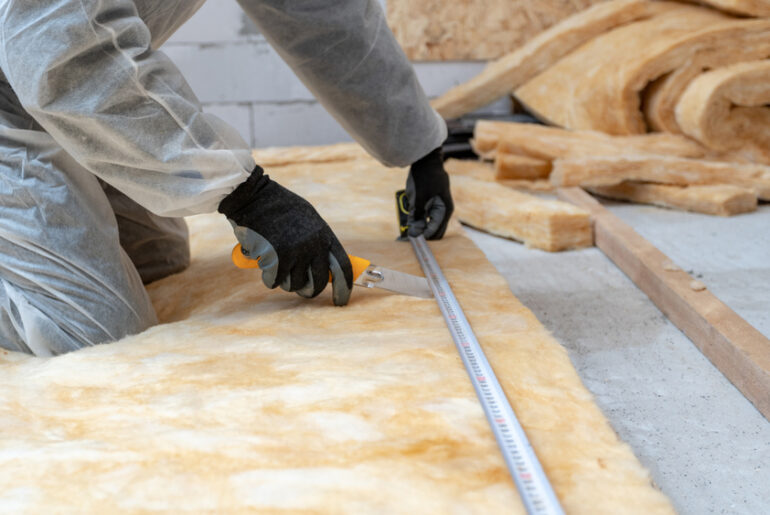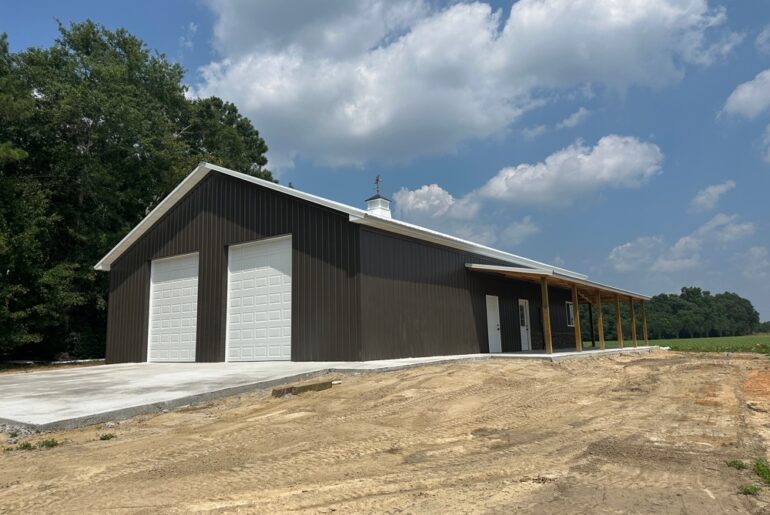If you’re considering adding or improving your existing home’s insulation to enhance the comfort of your house while reducing heating and cooling costs, you might’ve already come across fiberglass insulation—one of the most popular insulation types on the market today.
However, you might have already noticed that it’s available in four colors: white, yellow, green, and pink. And maybe you’re left wondering what the differences are between the four available fiberglass insulation colors.
Knowing which fiberglass insulation is suitable for your preference and needs is important. But do not fret. This article will give you everything you need to know about the differences between white, yellow, green, and pink fiberglass insulation. So, read on now for more information.
Is There (Any) Difference Between White, Yellow, Green, and Pink Fiberglass Insulation?
In general, the white, yellow, green, and pink fiberglass insulation is functionally identical. Their color is the only difference between the four fiberglass insulation. Although different in color, there’s no definite difference in R-value or heat resistance (how well the insulation maintains the heat from leaving or entering the house). All white, yellow, green, and pink fiberglass insulation offers the same insulation properties.
In addition, they are all made of molten glass spun or blown into fibers while coated with a liquid binder, such as resins at high temperatures.
All four fiberglass insulation colors can be manufactured as batts, rolls, or boards. Also, fiberglass insulation may vary in thickness and size, depending on the specific dimension given by the manufacturer.
Why Does Fiberglass Insulation Come In Different Colors Then?
The core reason why fiberglass insulation comes in different colors (white, yellow, green, and pink) is simply because of the binding agent used by the manufacturer to bind together the microscopic fiberglass strands.
The color of the binding agent, often resin, determines the color of the fiberglass insulation. It has nothing to do with the difference in the materials it is made out of or the R-value.
Moreover, you can think of the color difference acting as the manufacturer’s trademarked colors on their product. For example, yellow fiberglass insulation is often considered a generic color. In contrast, Owens Corning is the only company holding the trademark for pink fiberglass insulation, meaning they are the only company allowed to produce it. On the other hand, the company Johns Manville has the brand for the colors white and green.
Does Fiberglass Color Affect Its Quality?
The fiberglass insulation color doesn’t affect its quality, nor does it indicate its grade. Fiberglass color doesn’t also indicate its R-value. The only thing you need to consider when choosing which color of fiberglass insulation to buy is your personal preference. Fiberglass insulation is often not exposed, so its color often won’t affect your interior design either. You may also select the specific color of fiberglass insulation based on the manufacturer you trust the most.
Does Fiberglass Insulation Color Change Over Time?
Generally, fiberglass insulation doesn’t usually change color, but in some cases, it becomes discolored when there’s an air leak or mold growth in your house. The only time fiberglass insulation changes color or becomes discolored is when the insulation becomes dirty as the air leak carries moisture, dust, and other contaminants that eventually turn fiberglass insulation gray, brown, or black.
When you notice any sign of fiberglass insulation discoloration in your house, it indicates a system of an issue inside your home. Therefore, it’s important to check or have a professional handle it.
Why Pink Is The Most Popular Fiberglass Insulation Color?
The reason why pink is the most popular fiberglass insulation color is that it dates back to the modern fiberglass insulation invention. In 1938, an employee of Owens Cornings named Russell Games Slayter invented it. Then, the company started adding red dye to their product for marketing purposes and to distinguish themselves. The added red dye resulted in bright pink (resembling fluffy rolls of cotton candy) that they introduced to consumers in 1956.
After that, however, Owen Cornings discontinued the production of pink fiberglass insulation for a short time. Still, installers started asking for the pink insulation, which prompted the company to bring the pink insulation back into the market.
Because of that, the pink color became an effective marketing tool, which made it the typical referent for the generic term fiberglass. This is also why pink fiberglass insulation became the most well-known type, often used by 90 percent of the buildings and houses in the country as insulation.
Is There Pink Non-Fiberglass Insulation?
Currently, there are no other types of insulation that are available in the color pink aside from fiberglass insulation.
Is There White Non-Fiberglass Insulation?
An example of an insulation type available in the color white is mineral wool insulation. Mineral wool is molten stone, slag, or volcanic rock (basalt), while fiberglass is fiberglass. It’s also stiffer, denser, and highly fire-resistant than fiberglass. In addition, mineral wool insulation is also highly resistant to water and moisture, as it is hydrophobic, while fiberglass is not.
Spray foam insulation is also another insulation type available in the color white. It’s made from a mixture of isocyanate and polyol, turning resin into foam. It’s also applied through spraying while fiberglass is installed by pressing the batts into place.
Is There Yellow Non-Fiberglass Insulation?
Spray foam insulation also comes in yellow. You can differentiate it by its installation process, which is through spraying. Aside from its notable appearance of foam, it can also insulate harder-to-reach places like holes, nooks, or corners, unlike fiberglass, which is much more complex when compressed.
Mineral wool insulation is also available in the color yellow or gold. Its appearance resembles fiberglass insulation, but it’s created from natural minerals, such as diabase or basalt, while fiberglass is made of molten glass fibers. It’s also more commonly used as exterior insulation than fiberglass, which is not used as continuous exterior insulation.
Is There Green Non-Fiberglass Insulation?
Spray foam insulation is another type of insulation available in the color green. You can differentiate spray foam from fiberglass insulation by looking at its appearance and the materials used. Spray foam insulation is made of isocyanate and polyol with an appearance of foam, while fiberglass insulation is made of molten glass fibers with fluffy cotton candy-like appearance.
Spray foam also differs in its installation process, which is through spraying, while fiberglass is installed by pressing the batts or other forms into place. Spray foam insulation also has a higher R-value, making it a better insulator than fiberglass insulation.





